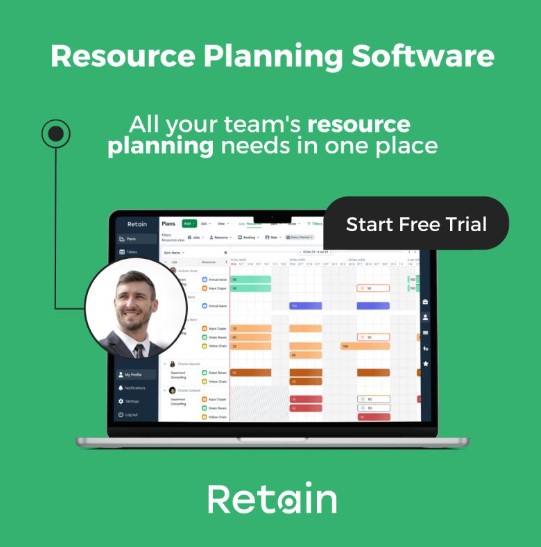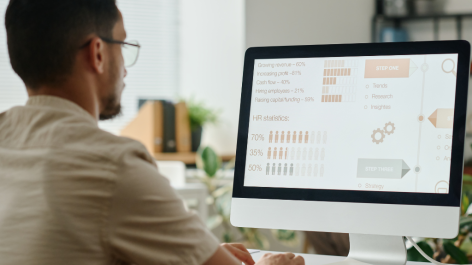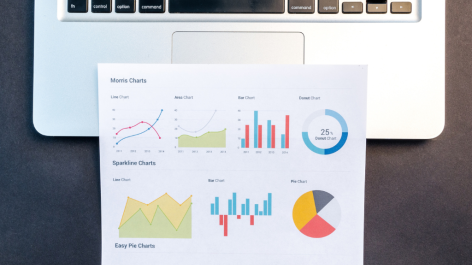Getting accurate forecasts of skills, capacity and staffing is crucial to delivering projects on time and within budget. Without it, businesses risk being understaffed or having skill gaps. Not ideal. But traditional manual forecasting methods just don't cut it anymore.
Technology has changed the game completely. It's made forecasting more efficient, data-driven and collaborative. The latest digital tools, cloud platforms, machine learning, and predictive analytics make forecasting smoother and super precise. And the benefits are big: increased accuracy, better teamwork, time and cost savings, and flexibility to change plans.
For managers under pressure to optimise resources, these solutions are a must-have. That’s why in this article we look at where traditional methods fall short and how modern tools enable strategic resource forecasting. ?
The evolution of resource forecasting
Resource forecasting systems have come a long way in the last decade. Managers used to rely on clunky spreadsheets and rough guesses to estimate future needs. It was messy, manual, and painfully inaccurate. Siloed teams worked in bubbles, making projections based on limited data and sales pipelines. Without a 360-degree view, forecasts had major blind spots. Plans were opaque and relied heavily on gut instinct rather than hard data.
Updating projections meant time-heavy number crunching. And with no integration or analytics, forecasts quickly became outdated. Not to mention that outdated knowledge brought bias and human error into the mix. These data deficits, siloed planning and static spreadsheets led to reactive forecasts full of holes. This made aligning resources with actual project timelines a huge challenge. But modern solutions have changed the game completely.
Intelligent software, like Retain, delivers data-driven forecasting across the entire organisation. Advanced analytics spot trends and risks early. And real-time inputs mean precise, dynamic planning.
It's goodbye clumsy spreadsheets, hello streamlined, collaborative forecasting. Let’s take a closer look…
How technology boosts resource forecasting
It’s fair to say that the resource forecasting game has been shaken up by digital transformation. Cutting-edge resource forecasting technologies are making their mark:
?Leave siloed spreadsheets in the past. Cloud platforms enable real-time, unified forecasting across the business. Everyone's looking at the same data and on the same page. Collaboration is built-in.
?AI algorithms crunch historical data to spot trends invisible to humans: Machine learning models can then make highly accurate forecasts.
?Advanced analytics turn plain data into stunning visualisations: Interactive dashboards give managers real-time visibility into risks and scenarios. Modern forecasting is insights-driven.
?Big data integration means forecasts tap into rich data from across HR, sales, projects and finance: The algorithms generate holistic plans tuned to actual needs.
?Automated notifications keep everyone looped in when forecasts change: Planning becomes responsive and agile.
?Custom forecasts are created to meet specific needs: This allows you to drill down into the details like seniority, skills, or project types. One size doesn't fit all anymore.
?Stress testing plans is easy: At the tap of a button, models generate forecast scenarios under different assumptions. And risk management is built-in.
?No more duplication of work: Open APIs allow seamless syncing between forecasting systems and existing IT setups.
The latest solutions have transformed forecasting from disconnected spreadsheet crunching into integrated, intelligent planning. Technology has fast-tracked resource management into the future.
We’ve seen how technology has boosted resource forecasting from manual work into a strategic workflow. Next up, we’ll take a look at the specific benefits.?
5 benefits of technology for resource forecasting
There are a number of benefits from using technology for resource forecasting, here's a round-up of the top 5:
1. Increased accuracy and efficiency
Modern forecasting technology brings a new level of accuracy and efficiency. And this is how:
- Forecasts with complete data from across the business cuts out the guesswork. This includes historical resourcing stats, project timelines, and pipeline deals - this is the good stuff that makes forecasts bulletproof.
- AI uncovers trends invisible to humans, surfacing game-changing insights from the data.
- Custom forecasts allow you to drill down into the details like seniority, skills, locations, and project types. No more one-size-fits-all plans missing key details.
- Automation saves managers time while eliminating manual slip-ups.
- Scenario modelling stress-tests plans to spot weaknesses early. Teams can simulate different futures at the click of a button.
- Real-time dashboards make changes immediately visible, so forecasts stay dynamic. No more waiting around for updates.
- Instant notifications keep everyone in the loop on forecast alterations. Planning goes agile.
- Streamlined processes, single data sources and integrations break down silos.
?With all these advantages, modern solutions boost forecasts with pinpoint insights and minimal friction. The result? Optimal resource allocation without the headaches.
2. Real-time adjustments and adaptability
Agile resource management needs forecasting that's agile and responsive. Here’s how modern tech makes this possible:
- Real-time dashboards give instant insights as forecasts change, keeping managers ultra-responsive.
- Automated alerts flag forecast alterations in real-time. This means managers can jump on deviations early before things get out of control.
- With just a few clicks, managers can run endless scenarios to stress test plans. Agility is baked in.
- Open API integrations mean forecast updates flow freely between systems - no delays or friction.
- Version control creates audit trails on changes, promoting transparency. No more forecast black boxes.
- Simulations assess downstream impacts of forecast changes organisation-wide. Ripple effects get flagged early.
?With these slick features, the right resource forecasting technology empowers managers with real-time visibility and control over dynamic forecasts. Planning goes agile, responding smoothly to needs as they evolve.
3. Integration with business systems
Modern resource forecasting tools sync seamlessly with existing systems. This is integration at its best:
- Open APIs plug forecasts into HR systems, pulling real-time staffing data into the mix.
- ERP integrations inject up-to-date project timelines and budgets into models. Which means forecasts stay truth-based.
- CRM connections feed in sales pipeline and deal closure odds. This means models align with deal reality, not wishful thinking.
- Financial platform integrations factor revenue goals and growth estimates into the forecasts. This allows models to get turned into financial targets.
- Links with BI dashboards centralise key metrics for the full picture - utilisation, bench strength, and skills matrix. And blind spots get eliminated.
- Connections with data warehouses harmonise forecasts with enterprise reporting. So that everyone's on the same page.
- Single sign-on creates a slick unified experience vs constant app-hopping. And task flows are seamless.
?With this seamless interoperability, forecasting reaches new levels of accuracy and process optimisation. Syncing systems is key for plans tuned to real objectives.
4. Cost-effectiveness
Adopting new tech requires upfront investment, but the cost savings down the road are massive. Here's how:
- Automation and integration say goodbye to manual number-crunching. This means managers get plenty of hours back in their week for strategic work.
- Optimised staffing from better forecasts saves money previously wasted on bench time and over-hiring.
- Accurate forecasts spotlight peak demand times for just-in-time temporary hiring. No more over-staffing during lulls just to cover spikes.
- Tighter forecast alignment with actual project timelines improves budgetary control. And contingency buffers can slim down.
- Early visibility into risks from scenario modelling enables pre-emptive mitigation before things escalate.
- More strategic resource allocation drives up project margins and win rates. And profitability gets a solid boost.
- Trends and hard data help managers justify forecast-driven plans. Which means budget approvals become much easier.
?While new tech requires investment, the long run savings from optimisation, precision and risk mitigation make that cash outlay more than worthwhile.
5. Facilitating collaboration
As a final point, new technology transforms forecasting from a siloed solo activity into a team enterprise:
- Cloud platforms with role-based access enable open information sharing between business units.
- Interactive dashboards get everyone on the same page regarding projections.
- Transparency within models aids planning discussions and decisions become collective.
- Real-time alerts loop everyone in on forecast changes. The team stays connected 24/7.
- Custom views allow different lenses into forecasts while co-editing master plans.
- Automated scheduling provides a rhythm for recurring forecast check-ins.
- Integrations with other tools provide back channels for ongoing conversations alongside data.
- Audit trails document collaborative changes, promoting accountability. And forecasts become team-owned.
?With these elements, the right resource forecasting technology breaks down forecasting silos and hierarchy for inclusive planning grounded in transparency.
Transform resource forecasting with technology
As we’ve seen, modern tech like AI, real-time analytics and resource planning platforms have completely changed the game. These tools minimise human bias, incorporate live data, boost visibility, enable agility and boost teamwork. Forecasting goes from fragmented guesswork to unified insights.
The benefits are undeniable: pinpoint accuracy, huge efficiency gains, cost savings, informed decisions and seamless integration with other business systems. Despite the initial outlay, optimised resource utilisation pays off in higher long-term profitability.
With the right tools, planning can evolve from a clumsy spreadsheet chore into a streamlined, analytics-driven process that steers strategy.
Platforms like Retain’s resource management software provide an easy way to move to the world of smart forecasting through cutting-edge capabilities. And as your needs grow, we continuously upgrade features through new developments.

?Contact us today to bring resource forecasting into the future for your business.
Or if you're looking for more, check out these posts on resource forecasting:
?How resource forecasting helps with risk management
?The role of technology in resource forecasting


